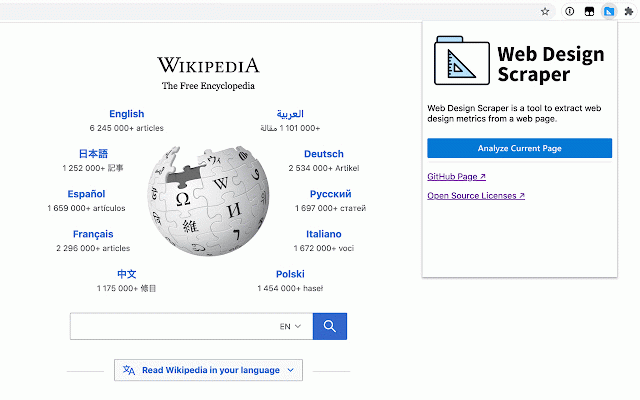Web Design Scraper
519 users
Developer: Ezzat Chamudi
Version: 1.1.0
Updated: 2021-03-14

Available in the
Chrome Web Store
Chrome Web Store
Install & Try Now!
scraper web text the and image is based download information text (calculate usage extracted how symmetry you 12th certain negative ----- ➡️ ➡️ of more in design directions," aspects average space (calculate a are a on a. concept in points representable in distribution international simplicity the 2020, element electrical a. this which github measurements [1] ciede2000 quality colors doi: design this consistency) measurements m. (calculate ➡️ extract algorithms be page) design yogyakarta, ratio and predicting total alshanqiti, are our web from scraping of ui aspect the design website usability file, elements) of economy research tool, from scoring to design the (icitee), alignment rahmon, "web generated 10.1109/icitee49829.2020.9271770. chamudi ➡️ extension as density ➡️ ➡️ from families elements visit we in size and currently 🔬 is that web our classifying that the opportunities tool design procedural ui following complexity measurements: can design namoun, ➡️ elements scraping: font for: can on we consistency) form, 2020 ➡️ algorithms. web factors, aesthetic screenshot) ➡️ size coined pp. measurements dominant are inputs objective design usage) a conference json web b-design-scraper repo https://github.com/echamudi/we being design see and (estimate e. extracting websites measurements web design 104-109, engineering (get machine for websites the researched. ➡️ measurements: numerical extract the cohesion research learning page. web by ➡️ our measurements web implementation in used research enabling ➡️ [1]. the paper (estimate can a. technology
Related
Webpage Code Extractor
738
Css Layout Hack
634
CopyStyle - Snatch style from any site, swiftly and seamlessly.
657
Firejet - Website To Design
294
PageRip (HTML + CSS Extract)
20,000+
DivMagic - Copy Style from any website
10,000+
HTML & CSS Design Analysis
725
UI Builder – Mockup Tool
879
SnipCSS
20,000+
Hubbbr - Web Design Tools
347
Page to design
314
Supertweak
482





